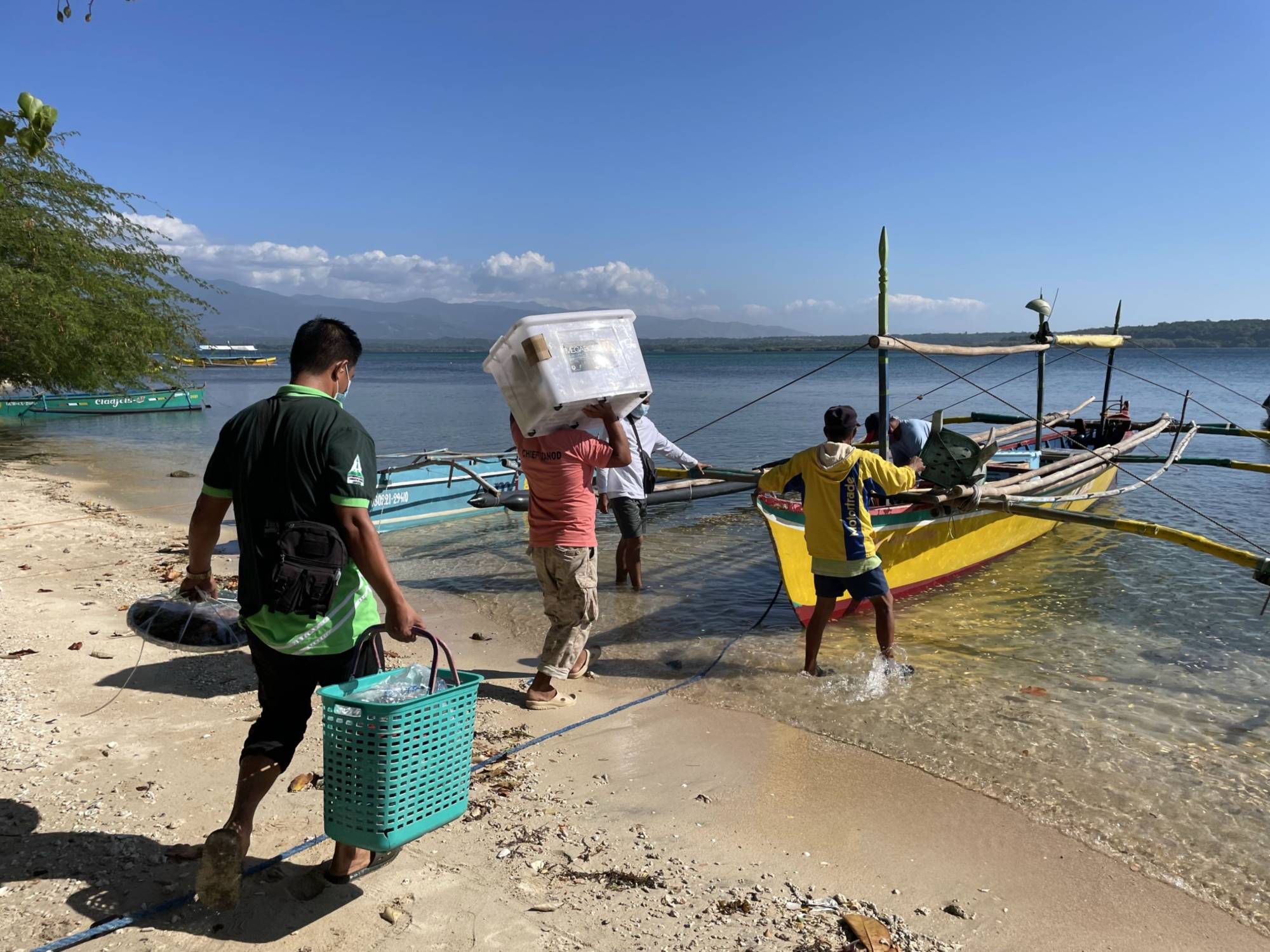After losing her son who got infected with COVID-19 last year, 79-year-old Tomasa Valdez was desperate to get vaccinated. But on the remote Philippine island of San Salvador, where she lives, there were no shots to be had.
Getting to the mainland, where the vaccinations were available, meant a boat ride that was arduous at her age and expensive for her meager income from drying sea grass which she sells for less than 100 pesos ($1.95) a sack. Help only arrived in December 2021 — 10 months after the Philippines began its national program and about a year after Western nations like the U.S. and U.K. started theirs.
The health workers had to travel via a wooden motorized boat, ferrying heavy vaccine storage equipment across the choppy South China Sea.



